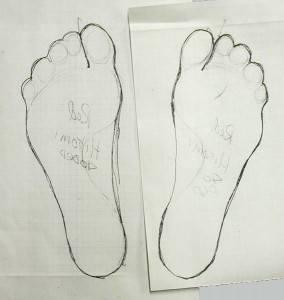Constructive rest is my favorite psoas release and one of my favorite positions to rest in.
As a resting position, the alignment doesn’t matter that much. The pose, as created by Lulu Sweigard, was done with the knees touching and the arms crossed over the chest.
The version of constructive rest that I teach modifies this slightly allowing the hands to sit on the rib cage or by the sides, though I like my hands in contact with the trunk.
The legs are belted at mid-thigh, mostly so the person doing the pose doesn’t have to think about them too much, though, for the last couple of years, I have been doing constructive rest without a belt.
But the correct placement of the feet is key. The heels should be directly in line with the bony base of the pelvis, the ischial tuberosities.
Any deviation from this alignment allows the legs to stabilize which can detract from the release of the psoas.
Constructive rest is a gravitational release of the psoas and we are trying to create the best possible environment for the psoas and body to let go of unprocessed energy.
When in constructive rest with the feet properly aligned, the legs often do strange and interesting things like flop from side to side, shake, and sometimes even stamp the floor.
If the legs are even an inch wider than what I consider their correct alignment, they are too well-rooted and won’t move from their stable position.
 Constructive rest is looking to encourage vulnerability in the body so this way of setting the feet up is essential.
Constructive rest is looking to encourage vulnerability in the body so this way of setting the feet up is essential.
If it is hard for you to feel or visualize this on your back, you can go so far as to have someone help you set up the pose and then trace an outline of your feet on your mat or a piece of cardboard so that you know exactly where to go every time you lay down in constructive rest.
